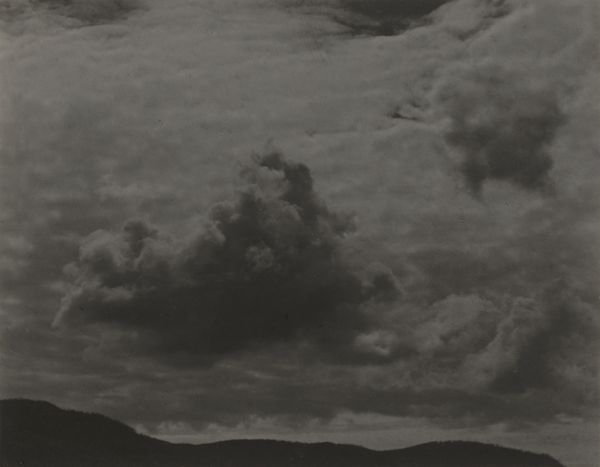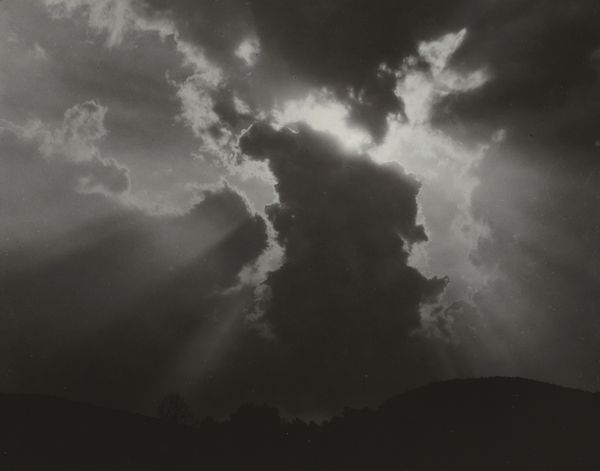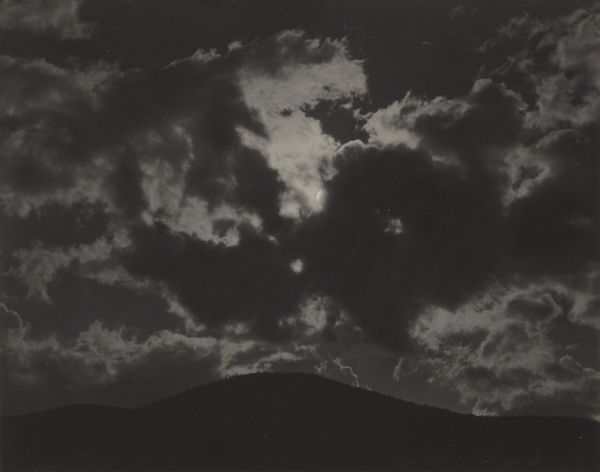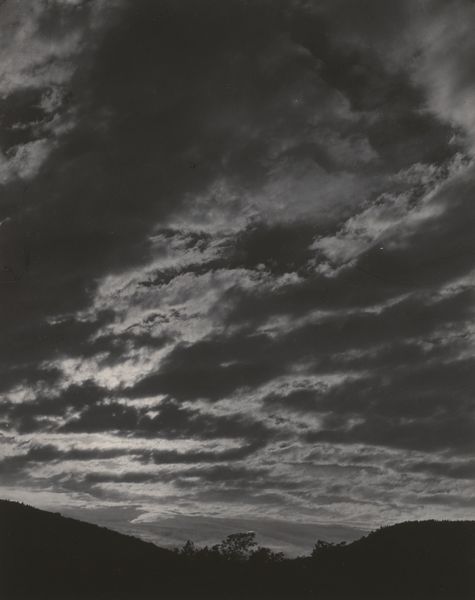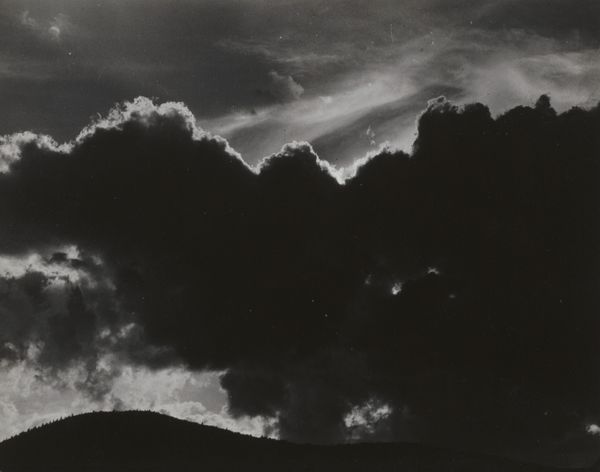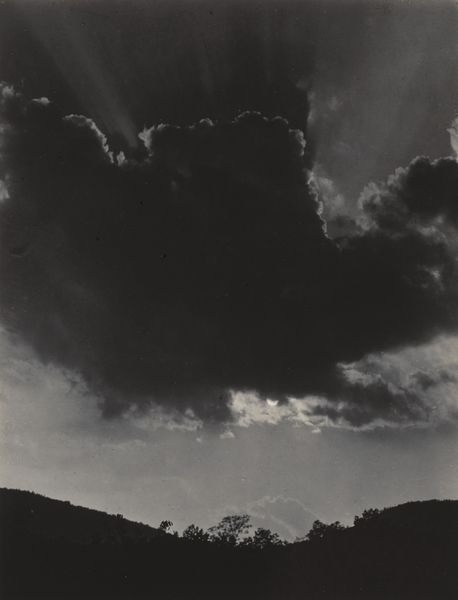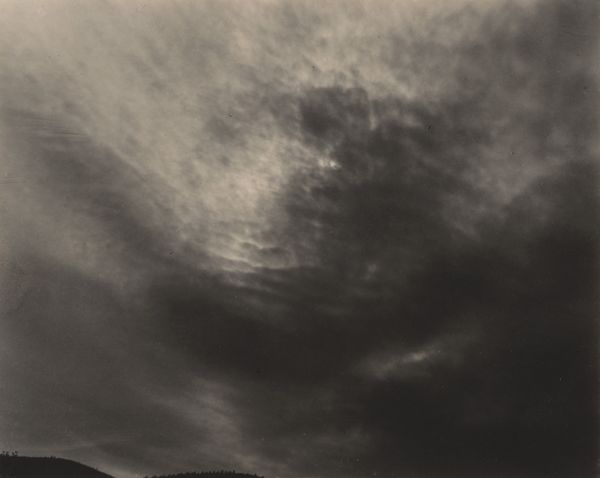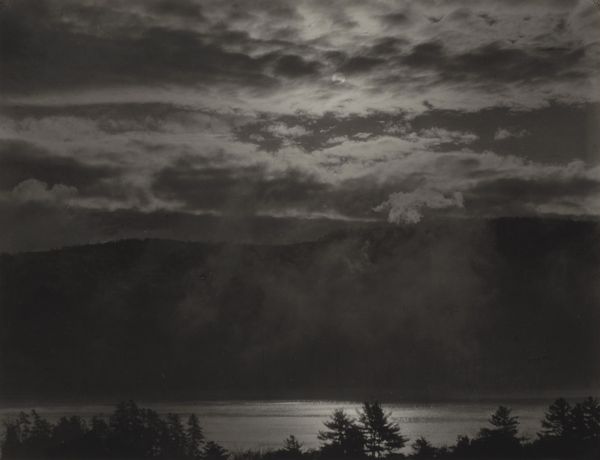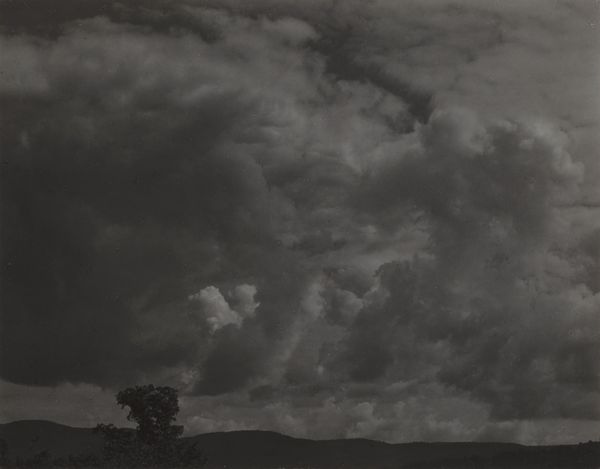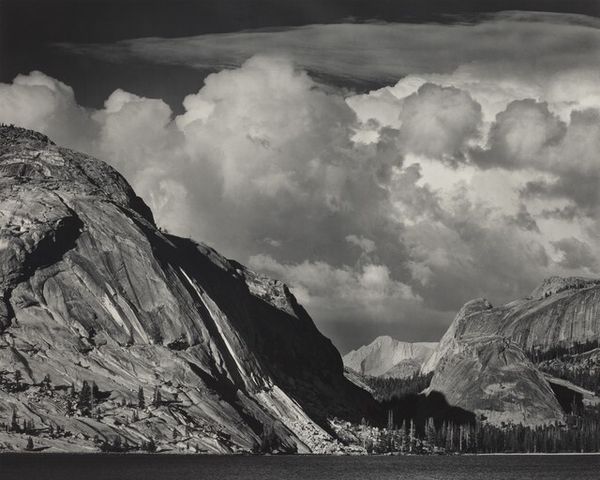
Dimensions: sheet (trimmed to image): 8.1 x 10.5 cm (3 3/16 x 4 1/8 in.) mount: 31.7 x 25.2 cm (12 1/2 x 9 15/16 in.)
Copyright: National Gallery of Art: CC0 1.0
Editor: So, here we have "On Lake Thun, Switzerland," a gelatin-silver print, potentially taken between 1886 and 1934, by Alfred Stieglitz. It strikes me as rather dramatic; the sky really dominates. What do you see in this piece? Curator: Beyond its aesthetic appeal, I see Stieglitz engaging with the complex relationship between nature and human intervention. Considering the late 19th and early 20th centuries, we have the rise of industrialization and anxieties about its impact on the environment. How does Stieglitz, through the lens of Pictorialism, address this tension? Editor: I hadn't considered that context! The almost painterly quality does soften the landscape; it’s romantic, even. Curator: Exactly. But isn't there something unsettling in that romanticism? It obscures the very real social and ecological costs of progress, especially regarding class disparities in enjoying pristine landscapes. This kind of imagery often caters to those who benefit from the exploitation of both natural resources and working-class labor. Does that make you reconsider your initial impression? Editor: It does. The dark, looming mountains now feel less majestic and more...oppressive, maybe? Curator: Think, too, about who has access to leisure and picturesque scenery like this. Early photography, especially that which romanticizes nature, became a tool, subtly reinforcing specific class and racial privileges by promoting an idealized, often unattainable lifestyle. Editor: So it's not just a landscape, it's a statement about access and power. Curator: Precisely. And understanding that adds layers of complexity to what we initially perceive as beautiful or tranquil. This approach compels us to unpack the social and political implications of images we might otherwise consume passively. Editor: I’ll definitely look at landscapes differently from now on. Curator: That's the power of contextualizing art! Hopefully you find ways to situate what appears “neutral” in explicit systems of belief.
Comments
No comments
Be the first to comment and join the conversation on the ultimate creative platform.
